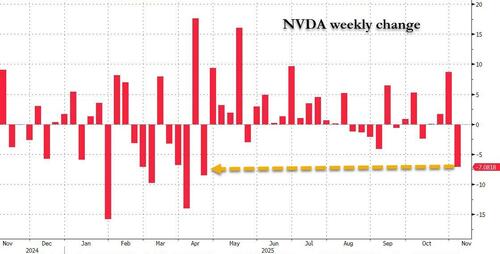While there is a lot of investor’s focus on finding gems or the next multibaggers within the small cap space, what needs to be kept in mind is that small cap universe (companies ranked 250 to 500 based on market capitalisation) forms only ~ 8.8% of the profit pool and 9.5% of market cap pool. 74.9% of profit pool and 72.4% of market cap pool still lies in the large cap space (top 100 companies by market capitalisation).
If you compare the BSE Smallcap index returns with BSE 100 returns, the returns of the small cap index have been higher by only 1.7% CAGR over a 23 year period. Though 1.7% higher returns compounded over a long period of time would make a vast difference to the portfolio value, what gets ignored is that the returns are very volatile compared to the large cap index returns. Also, if we look at the period from 2003 till about March 2020 (17 year period) which is a long enough period, the smallcap index hardly outperformed the large cap index despite the investors taking higher risks.
A portfolio manager/investor can perform better compared to the small cap index simply by eliminating the obvious “gruesome” companies. By bad companies, I mean companies that earn Return on equity (ROE) below 10% or Debt to EBITDA is more than 5x or negative operating cash flows for the past 3 years combined. This bucket of “gruesome” companies comprise ~ 35% of the small cap universe as of today. By simply eliminating these 35% of the companies, the performance of the portfolio manager/investor increased by ~ 390 bps on a CAGR basis for the past two decades.

View Full Image
Sometimes there is excess focus on market capitalization of the company and whether it is a small, mid or large company but there are some sectors or sub-segments of the sectors where the constituents are only in the small or mid cap space. Given the opportune market size of the sector, no company in the sector may fall in the large cap space. For eg. there are spaces like pathology labs, commodity exchanges, power exchanges, mattress, packaging etc which are represented only in the small cap space given that the industry size itself is very small.
Having talked about the probability of earning higher returns, let us consider some challenges.
Two major risks of investing in small cap companies are large drawdowns and low liquidity in the space especially in the bad times. We have seen in bad times in the past, small caps tend to fall more than the large caps and hence the investor should have the ability to ride through these large drawdowns over a period of time. Also, the liquidity in most of these small caps is very low with lower market capitalisation and lower free float. Even if you are able to find liquidity, impact costs at most times would be much higher while buying or selling these companies.
Reasons for large drawdowns can be manifold. Since these are smaller companies, in some cases the business may not be adequately diversified. Either the business could be restricted to limited products or geographies or customers. There could also be excessive dependence on fewer vendors or customers. Management and governance risk also tends to be higher in these companies as most of these companies are driven by first generation entrepreneurs and they would either not have thought of succession planning or building a second line of management within the company or some promoters might be using the company’s funds for personal interests given that there is no clear line between promoter’s books and company’s books.
There is also a risk of unrelated diversification of capital misallocation as it is with larger companies. The difference here is that a bad diversification can have a huge impact on the profitability or the operations of the segments which the company is already into and can destroy value for minority shareholders if the diversification does not play out as it was intended to be. Having said that, not all smallcaps are subject to these vulnerabilities. In fact, there are small cap companies that are very well managed and have robust business models.
There is a huge survivorship bias in this space. Most of the investors would only remember the companies which either turned into mid caps or large caps eventually but would not remember the number of companies which failed in doing so. The base rate of selecting a small cap company which will eventually turn into a large cap company is very very low. Also, investors tend to remember portfolio managers for their picks which worked out well for them but there would be many companies in the same portfolio which would not have worked out well and the portfolio manager would have either exited that company or it would have become a very small position in the portfolio given that it performed poorly compared to the positions that did well.
The approach to investing in this space should also be very different compared to larger companies. Given that not much information is available in the public domain, the analyst would have to go on the ground to meet the distributors, dealers, competitors, ex-employees etc and gauge the reality instead of just going through the annual reports and conference call transcripts sitting on a desk. The approach to analyzing private companies would probably be the best approach to look at these companies.
The only way to mitigate all the risks mentioned above is to have adequate diversification in the portfolio. This is not a space where you can have a concentrated portfolio. Just like venture capital funds spread their bets across various companies, the portfolio manager needs to have wide diversification. Some companies in the portfolio may do really well, some may have to be written off and some will give returns similar to market returns. The companies which typically do really well would be far and few but they would be outliers and at a portfolio level, they would help to beat the market returns over long periods.
Flows to the small cap funds be it mutual funds, PMS or AIFs are also very cyclical and they typically follow the trailing returns. The moment trailing returns look very good, retail investors tend to jump to the bandwagon and flows tend to be very good for months in a row. Given the liquidity constraints which I spoke about, huge flows chase small free float in the space and there is a lot of impact cost while buying at this time in the cycle. The way the small cap portfolio managers tend to mitigate these huge flows is through adding more companies in the portfolio via diversification but it can take you further only to a certain extent. The best way to mitigate this for the end investors is to restrict flows to this space when there is euphoria for elongated time periods.
Last but not the least, valuations of small caps tend to be very cyclical. Hence, it is paramount to avoid this universe when there is a fancy in the market and everyone is chasing the same set of stocks. In bad times, you will not only get valuations in your favor but also liquidity given that flows would be negative and funds would come out to sell stocks at whatever price possible even at some impact cost. As seen in the below chart, you will come across periods where you will find reasonable valuations in this space as well and there will be periods where they will be very expensive. The valuations tend to mean revert when they are at extremes.
“Exciting news! Mint is now on WhatsApp Channels 🚀 Subscribe today by clicking the link and stay updated with the latest financial insights!” Click here!
Download The Mint News App to get Daily Market Updates.
More
Less
Updated: 26 Sep 2023, 01:17 AM IST















